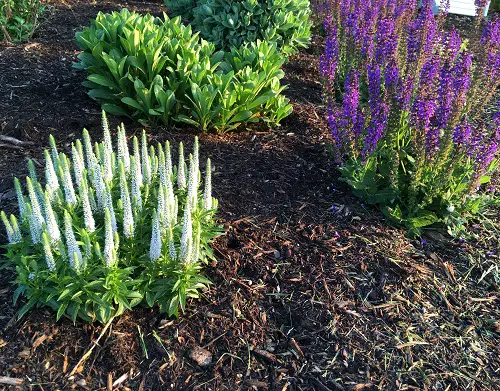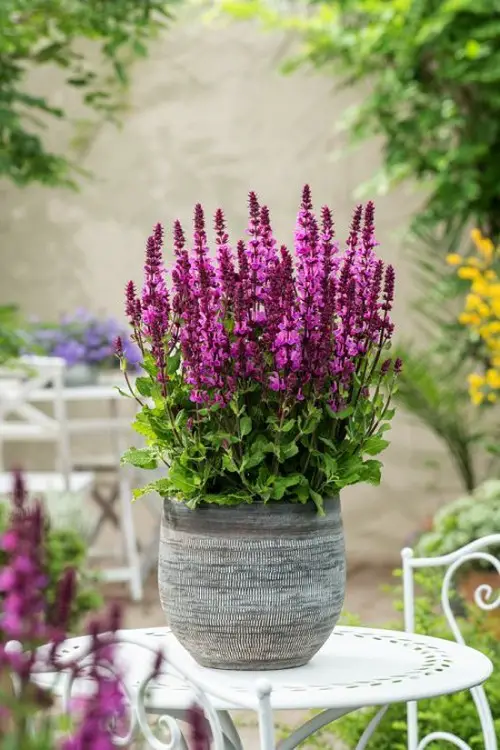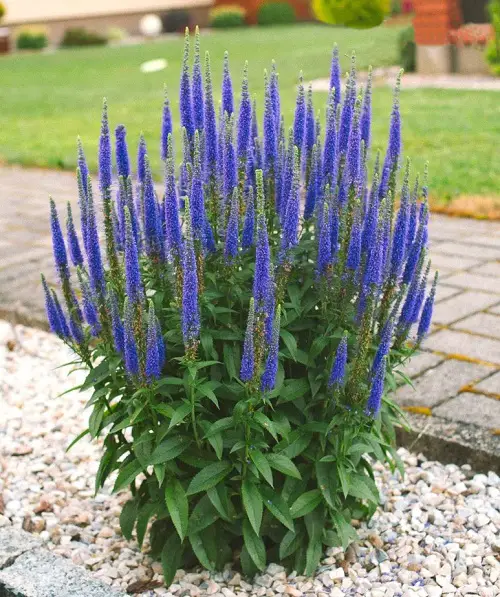Salvia vs. Veronica: Let’s end this debate once and for all by having a detailed look at all the differences between these plants!
Understanding the unique attributes of these two botanical specimens will give you a detailed insight into their characteristics, growth habits, flowers, and more! Let’s have a look at Salvia vs. Veronica and all the dissimilarities between them!
Salvia Plant Information
Salvias are a part of the mint family, Lamiaceae, which has over 900 species. Most Salvias have different sizes and shapes but are often tall and upright with lance-shaped leaves. They have tubular flowers that are arranged in whorls and come in red, purple, blue, white, and pink shades.
Salvias are aromatic and give off an earthy fragrance. They also have a savory, slightly peppery flavor that makes them an excellent addition to many dishes around the world.
Veronica Plant Information
Veronicas belong to the Plantaginaceae family, which is smaller but still has nearly 500 species. They’re known for their upright growth and distinctive flower spikes.
Veronicas are low-growing and dense. Their flowers are really pretty and come in blue, purple, pink, and white colors. They aren’t aromatic, and their leaves lack strong flavors, so they don’t have much culinary use. They’re used as ornamental plants but also in tonics and tinctures.
Crown of Thorns Plant Meaning
Salvia vs. Veronica

1. Appearance
Salvias have taller, tubular stems and are also taller in size. Most varieties easily grow 2-5 feet tall. On the other hand, Veronica flowers are shorter, only reaching 1-4 feet.
2. Cultivation
Salvias are hardy and can be grown in USDA zones 5-9. Veronicas are adaptable as well but more suited to cooler climates. They grow in zones 3-11.
3. Flowers
Salvia flowers are tubular and attract various pollinators like hummingbirds and butterflies. Veronica flowers don’t come in red shades, unlike Salvias. They’re mostly blue and purple.
4. Foliage
The leaves of Salvias are lance-shaped or serrated. And as we told you earlier, they’re aromatic and can also be used in cooking. Veronica plant foliage is also lance-shaped but smaller in size. They’re grown for their flowers and not the leaves.
5. Cold Tolerance
Salvias are popular for their cold hardiness and can easily survive if you give them proper care. However, Veronicas are better in this regard, as they can tolerate colder winter temperatures than Salvias.
6. Maintenance
A little bit of pruning and fertilizer are all you need to give Salvias. But you can’t skip the pruning part in winter; otherwise, the plant won’t rejuvenate in spring. Veronicas don’t need much care, either. Just regular deadheading to prolong the flowering season.
Magnolia vs. Tulip Tree: All the Differences
7. Soil Preferences
Salvias need soil that is well-drained and slightly acidic to neutral. They can tolerate drought once established. Veronicas also thrive in well-drained soil but may prefer soil that retains some moisture, which makes them suitable for locations with occasional moisture availability.
8. Geographic Distribution
Salvias are found on nearly every continent. They’re a part of diverse ecosystems, from deserts to mountains and temperate regions to tropical environments. You’ll find Veronicas in most of the world, too, but they’re more concentrated in temperate regions of the Northern Hemisphere (Europe, Asia, and North America).
9. Flowering Period
Most Salvias that you grow will bloom continuously during the spring and summer months. Veronica flowers bloom a bit late in spring but keep blooming through fall. Some of these can re-bloom if you deadhead them.
10. Medicinal Uses
Salvias have a historical record of being used in medicine to improve memory and also aid in digestion. Veronias, too have been used in traditional herbal medicine but their use is not widespread and any benefits aren’t widely recognized.




